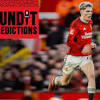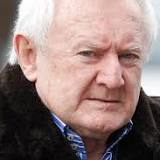Philip Zimbardo, the psychologist behind the 'Stanford Prison ...

Philip G. Zimbardo, one of the world’s most renowned psychologists, died Oct. 14 in his home in San Francisco. He was 91.
Broadly, Zimbardo’s research explored how environments influence behavior. He is most known for his controversial 1971 study, the Stanford Prison Experiment, with W. Curtis Banks, Craig Haney, and David Jaffe. The study, intended to examine the psychological experiences of imprisonment, revealed the shocking extent to which circumstances can alter individual behavior. To this day, it is used as a case study in psychology classes to highlight both the psychology of evil as well as the ethics of doing psychological research with human subjects.
Yet Zimbardo’s research went far beyond the prison experiment. In a career that spanned overfive decades, Zimbardo examined topics including persuasion, attitude change, cognitive dissonance,hypnosis, cults, alienation, shyness, time perspective, altruism, and compassion.
“Phil Zimbardo is one of the most prolific and influential psychologists of his generation – a true pioneer of the field of social psychology,” said Claude Steele, the Lucie Stern Professor in the Social Sciences, Emeritus, and professor of psychology. “Virtually all of Phil’s research shows how important phenomena of real-life human behavior can be studied scientifically. For a young science like social psychology, this has been an especially important contribution.”
Situational forces: Stanford Prison Experiment
Zimbardo first received national attention for his 1969 study that examined the causes of vandalism. He believed that anonymity and a lack of community could lead to antisocial behavior.
Zimbardo then examined the influence of the situation on human behavior in his now-notorious Stanford Prison Experiment. While he wanted to know more about the dynamics of prison life, Zimbardo was particularly interested in the influence of social roles on human behavior.
“Most people go about their daily life assuming that they have more control over their behavior than they actually do,” said Zimbardo in a 1971 Stanford News Service press release written at the onset of the experiment. He went on: “We are often unaware of the tremendous power which social situations exert upon us to shape, guide, and manipulate our behavior.”
In the study, Zimbardo and a team of Stanford graduate students created a mock prison in the basement of the Department of Psychology building. Some two dozen participants – young, healthy college-aged men – were recruited to spend two weeks in the prison as either prisoners or guards. (Roles were decided by a coin toss.)
Zimbardo was the prison superintendent – a role he was criticized for assuming because he was no longer a neutral observer but an active participant in the study.
As the experiment progressed, conditions rapidly deteriorated, and the line between role-playing and reality collapsed. The outcome, as Zimbardo later acknowledged, was “shocking and unexpected” and “out-of-control.” Some guards became tyrannical and abusive in their behavior toward prisoners. For the prisoners, the experience led to acute anxiety, emotional depression, crying, and rage.
The experiment, intended to last two full weeks, was shut down after six days due to the psychological abuses that transpired.
","additional":{"file_info":{"file_name":"LC166-25.jpg","size_readable":"531.2 KB","size_bytes":543928,"width":1000,"height":1500,"modified_readable":"Oct 18, 2024 10:07 AM","modified_unix":1729271239},"varieties":[{"id":"160947:v1","type":"image_variety","type_name":"Image Variety","version":"","name":"100w","short_name":"100w","status":{"id":16,"code":"live","name":"Live"},"created":{"date":"1969-12-31T16:00:00-08:00","user_id":null},"updated":{"date":"1969-12-31T16:00:00-08:00","user_id":null},"published":{"date":null,"user_id":null},"status_changed":{"date":"1969-12-31T16:00:00-08:00","user_id":null},"urls":["https://news.stanford.edu/__data/assets/image/0027/160947/varieties/100w.jpg"],"url":"https://news.stanford.edu/__data/assets/image/0027/160947/varieties/100w.jpg","attributes":{"variety_type":"resize","filename":"100w.jpg","name":"100w","title":"Philip Zimbardo","caption":"","variety_size":3560,"variety_height":100,"variety_width":100,"alt":"Black and white profile photo of Philip Zimbardo.","dimension_min":0,"dimension":100,"height":0,"width":0,"constrain":"centre_weighted_square"},"metadata":null,"contents":"","additional":{}},{"id":"160947:v2","type":"image_variety","type_name":"Image Variety","version":"","name":"150w","short_name":"150w","status":{"id":16,"code":"live","name":"Live"},"created":{"date":"1969-12-31T16:00:00-08:00","user_id":null},"updated":{"date":"1969-12-31T16:00:00-08:00","user_id":null},"published":{"date":null,"user_id":null},"status_changed":{"date":"1969-12-31T16:00:00-08:00","user_id":null},"urls":["https://news.stanford.edu/__data/assets/image/0027/160947/varieties/150w.jpg"],"url":"https://news.stanford.edu/__data/assets/image/0027/160947/varieties/150w.jpg","attributes":{"variety_type":"resize","filename":"150w.jpg","name":"150w","title":"Philip Zimbardo","caption":"","variety_size":5845,"variety_height":150,"variety_width":150,"alt":"Black and white profile photo of Philip Zimbardo.","dimension_min":0,"dimension":150,"height":0,"width":0,"constrain":"centre_weighted_square"},"metadata":null,"contents":"","additional":{}},{"id":"160947:v3","type":"image_variety","type_name":"Image Variety","version":"","name":"200w","short_name":"200w","status":{"id":16,"code":"live","name":"Live"},"created":{"date":"1969-12-31T16:00:00-08:00","user_id":null},"updated":{"date":"1969-12-31T16:00:00-08:00","user_id":null},"published":{"date":null,"user_id":null},"status_changed":{"date":"1969-12-31T16:00:00-08:00","user_id":null},"urls":["https://news.stanford.edu/__data/assets/image/0027/160947/varieties/200w.jpg"],"url":"https://news.stanford.edu/__data/assets/image/0027/160947/varieties/200w.jpg","attributes":{"variety_type":"resize","filename":"200w.jpg","name":"200w","title":"Philip Zimbardo","caption":"","variety_size":11738,"variety_height":300,"variety_width":200,"alt":"Black and white profile photo of Philip Zimbardo.","dimension_min":0,"dimension":0,"height":200,"width":200,"constrain":"width"},"metadata":null,"contents":"","additional":{}},{"id":"160947:v4","type":"image_variety","type_name":"Image Variety","version":"","name":"300w","short_name":"300w","status":{"id":16,"code":"live","name":"Live"},"created":{"date":"1969-12-31T16:00:00-08:00","user_id":null},"updated":{"date":"1969-12-31T16:00:00-08:00","user_id":null},"published":{"date":null,"user_id":null},"status_changed":{"date":"1969-12-31T16:00:00-08:00","user_id":null},"urls":["https://news.stanford.edu/__data/assets/image/0027/160947/varieties/300w.jpg"],"url":"https://news.stanford.edu/__data/assets/image/0027/160947/varieties/300w.jpg","attributes":{"variety_type":"resize","filename":"300w.jpg","name":"300w","title":"Philip Zimbardo","caption":"","variety_size":11738,"variety_height":300,"variety_width":200,"alt":"Black and white profile photo of Philip Zimbardo.","dimension_min":0,"dimension":0,"height":300,"width":200,"constrain":"width"},"metadata":null,"contents":"","additional":{}},{"id":"160947:v5","type":"image_variety","type_name":"Image Variety","version":"","name":"345w","short_name":"345w","status":{"id":16,"code":"live","name":"Live"},"created":{"date":"1969-12-31T16:00:00-08:00","user_id":null},"updated":{"date":"1969-12-31T16:00:00-08:00","user_id":null},"published":{"date":null,"user_id":null},"status_changed":{"date":"1969-12-31T16:00:00-08:00","user_id":null},"urls":["https://news.stanford.edu/__data/assets/image/0027/160947/varieties/345w.jpg"],"url":"https://news.stanford.edu/__data/assets/image/0027/160947/varieties/345w.jpg","attributes":{"variety_type":"resize","filename":"345w.jpg","name":"345w","title":"Philip Zimbardo","caption":"","variety_size":25801,"variety_height":518,"variety_width":345,"alt":"Black and white profile photo of Philip Zimbardo.","dimension_min":0,"dimension":0,"height":555,"width":345,"constrain":"width"},"metadata":null,"contents":"","additional":{}},{"id":"160947:v6","type":"image_variety","type_name":"Image Variety","version":"","name":"375w","short_name":"375w","status":{"id":16,"code":"live","name":"Live"},"created":{"date":"1969-12-31T16:00:00-08:00","user_id":null},"updated":{"date":"1969-12-31T16:00:00-08:00","user_id":null},"published":{"date":null,"user_id":null},"status_changed":{"date":"1969-12-31T16:00:00-08:00","user_id":null},"urls":["https://news.stanford.edu/__data/assets/image/0027/160947/varieties/375w.jpg"],"url":"https://news.stanford.edu/__data/assets/image/0027/160947/varieties/375w.jpg","attributes":{"variety_type":"resize","filename":"375w.jpg","name":"375w","title":"Philip Zimbardo","caption":"","variety_size":29413,"variety_height":563,"variety_width":375,"alt":"Black and white profile photo of Philip Zimbardo.","dimension_min":0,"dimension":0,"height":200,"width":375,"constrain":"width"},"metadata":null,"contents":"","additional":{}},{"id":"160947:v7","type":"image_variety","type_name":"Image Variety","version":"","name":"400w","short_name":"400w","status":{"id":16,"code":"live","name":"Live"},"created":{"date":"1969-12-31T16:00:00-08:00","user_id":null},"updated":{"date":"1969-12-31T16:00:00-08:00","user_id":null},"published":{"date":null,"user_id":null},"status_changed":{"date":"1969-12-31T16:00:00-08:00","user_id":null},"urls":["https://news.stanford.edu/__data/assets/image/0027/160947/varieties/400w.jpg"],"url":"https://news.stanford.edu/__data/assets/image/0027/160947/varieties/400w.jpg","attributes":{"variety_type":"resize","filename":"400w.jpg","name":"400w","title":"Philip Zimbardo","caption":"","variety_size":32140,"variety_height":600,"variety_width":400,"alt":"Black and white profile photo of Philip Zimbardo.","dimension_min":0,"dimension":0,"height":100,"width":400,"constrain":"width"},"metadata":null,"contents":"","additional":{}},{"id":"160947:v8","type":"image_variety","type_name":"Image Variety","version":"","name":"555w","short_name":"555w","status":{"id":16,"code":"live","name":"Live"},"created":{"date":"1969-12-31T16:00:00-08:00","user_id":null},"updated":{"date":"1969-12-31T16:00:00-08:00","user_id":null},"published":{"date":null,"user_id":null},"status_changed":{"date":"1969-12-31T16:00:00-08:00","user_id":null},"urls":["https://news.stanford.edu/__data/assets/image/0027/160947/varieties/555w.jpg"],"url":"https://news.stanford.edu/__data/assets/image/0027/160947/varieties/555w.jpg","attributes":{"variety_type":"resize","filename":"555w.jpg","name":"555w","title":"Philip Zimbardo","caption":"","variety_size":54470,"variety_height":833,"variety_width":555,"alt":"Black and white profile photo of Philip Zimbardo.","dimension_min":0,"dimension":0,"height":0,"width":555,"constrain":"width"},"metadata":null,"contents":"","additional":{}},{"id":"160947:v9","type":"image_variety","type_name":"Image Variety","version":"","name":"600w","short_name":"600w","status":{"id":16,"code":"live","name":"Live"},"created":{"date":"1969-12-31T16:00:00-08:00","user_id":null},"updated":{"date":"1969-12-31T16:00:00-08:00","user_id":null},"published":{"date":null,"user_id":null},"status_changed":{"date":"1969-12-31T16:00:00-08:00","user_id":null},"urls":["https://news.stanford.edu/__data/assets/image/0027/160947/varieties/600w.jpg"],"url":"https://news.stanford.edu/__data/assets/image/0027/160947/varieties/600w.jpg","attributes":{"variety_type":"resize","filename":"600w.jpg","name":"600w","title":"Philip Zimbardo","caption":"","variety_size":61686,"variety_height":900,"variety_width":600,"alt":"Black and white profile photo of Philip Zimbardo.","dimension_min":0,"dimension":0,"height":0,"width":600,"constrain":"width"},"metadata":null,"contents":"","additional":{}},{"id":"160947:v10","type":"image_variety","type_name":"Image Variety","version":"","name":"690w","short_name":"690w","status":{"id":16,"code":"live","name":"Live"},"created":{"date":"1969-12-31T16:00:00-08:00","user_id":null},"updated":{"date":"1969-12-31T16:00:00-08:00","user_id":null},"published":{"date":null,"user_id":null},"status_changed":{"date":"1969-12-31T16:00:00-08:00","user_id":null},"urls":["https://news.stanford.edu/__data/assets/image/0027/160947/varieties/690w.jpg"],"url":"https://news.stanford.edu/__data/assets/image/0027/160947/varieties/690w.jpg","attributes":{"variety_type":"resize","filename":"690w.jpg","name":"690w","title":"Philip Zimbardo","caption":"","variety_size":77782,"variety_height":1035,"variety_width":690,"alt":"Black and white profile photo of Philip Zimbardo.","dimension_min":0,"dimension":0,"height":0,"width":690,"constrain":"width"},"metadata":null,"contents":"","additional":{}},{"id":"160947:v11","type":"image_variety","type_name":"Image Variety","version":"","name":"705w","short_name":"705w","status":{"id":16,"code":"live","name":"Live"},"created":{"date":"1969-12-31T16:00:00-08:00","user_id":null},"updated":{"date":"1969-12-31T16:00:00-08:00","user_id":null},"published":{"date":null,"user_id":null},"status_changed":{"date":"1969-12-31T16:00:00-08:00","user_id":null},"urls":["https://news.stanford.edu/__data/assets/image/0027/160947/varieties/705w.jpg"],"url":"https://news.stanford.edu/__data/assets/image/0027/160947/varieties/705w.jpg","attributes":{"variety_type":"resize","filename":"705w.jpg","name":"705w","title":"Philip Zimbardo","caption":"","variety_size":80864,"variety_height":1058,"variety_width":705,"alt":"Black and white profile photo of Philip Zimbardo.","dimension_min":0,"dimension":0,"height":0,"width":705,"constrain":"width"},"metadata":null,"contents":"","additional":{}},{"id":"160947:v12","type":"image_variety","type_name":"Image Variety","version":"","name":"750w","short_name":"750w","status":{"id":16,"code":"live","name":"Live"},"created":{"date":"1969-12-31T16:00:00-08:00","user_id":null},"updated":{"date":"1969-12-31T16:00:00-08:00","user_id":null},"published":{"date":null,"user_id":null},"status_changed":{"date":"1969-12-31T16:00:00-08:00","user_id":null},"urls":["https://news.stanford.edu/__data/assets/image/0027/160947/varieties/750w.jpg"],"url":"https://news.stanford.edu/__data/assets/image/0027/160947/varieties/750w.jpg","attributes":{"variety_type":"resize","filename":"750w.jpg","name":"750w","title":"Philip Zimbardo","caption":"","variety_size":89623,"variety_height":1125,"variety_width":750,"alt":"Black and white profile photo of Philip Zimbardo.","dimension_min":0,"dimension":0,"height":0,"width":750,"constrain":"width"},"metadata":null,"contents":"","additional":{}},{"id":"160947:v13","type":"image_variety","type_name":"Image Variety","version":"","name":"795w","short_name":"795w","status":{"id":16,"code":"live","name":"Live"},"created":{"date":"1969-12-31T16:00:00-08:00","user_id":null},"updated":{"date":"1969-12-31T16:00:00-08:00","user_id":null},"published":{"date":null,"user_id":null},"status_changed":{"date":"1969-12-31T16:00:00-08:00","user_id":null},"urls":["https://news.stanford.edu/__data/assets/image/0027/160947/varieties/795w.jpg"],"url":"https://news.stanford.edu/__data/assets/image/0027/160947/varieties/795w.jpg","attributes":{"variety_type":"resize","filename":"795w.jpg","name":"795w","title":"Philip Zimbardo","caption":"","variety_size":98402,"variety_height":1193,"variety_width":795,"alt":"Black and white profile photo of Philip Zimbardo.","dimension_min":0,"dimension":0,"height":0,"width":795,"constrain":"width"},"metadata":null,"contents":"","additional":{}},{"id":"160947:v14","type":"image_variety","type_name":"Image Variety","version":"","name":"960w","short_name":"960w","status":{"id":16,"code":"live","name":"Live"},"created":{"date":"1969-12-31T16:00:00-08:00","user_id":null},"updated":{"date":"1969-12-31T16:00:00-08:00","user_id":null},"published":{"date":null,"user_id":null},"status_changed":{"date":"1969-12-31T16:00:00-08:00","user_id":null},"urls":["https://news.stanford.edu/__data/assets/image/0027/160947/varieties/960w.jpg"],"url":"https://news.stanford.edu/__data/assets/image/0027/160947/varieties/960w.jpg","attributes":{"variety_type":"resize","filename":"960w.jpg","name":"960w","title":"Philip Zimbardo","caption":"","variety_size":134153,"variety_height":1440,"variety_width":960,"alt":"Black and white profile photo of Philip Zimbardo.","dimension_min":0,"dimension":0,"height":0,"width":960,"constrain":"width"},"metadata":null,"contents":"","additional":{}},{"id":"160947:v15","type":"image_variety","type_name":"Image Variety","version":"","name":"1024w","short_name":"1024w","status":{"id":16,"code":"live","name":"Live"},"created":{"date":"1969-12-31T16:00:00-08:00","user_id":null},"updated":{"date":"1969-12-31T16:00:00-08:00","user_id":null},"published":{"date":null,"user_id":null},"status_changed":{"date":"1969-12-31T16:00:00-08:00","user_id":null},"urls":["https://news.stanford.edu/__data/assets/image/0027/160947/varieties/1024w.jpg"],"url":"https://news.stanford.edu/__data/assets/image/0027/160947/varieties/1024w.jpg","attributes":{"variety_type":"resize","filename":"1024w.jpg","name":"1024w","title":"Philip Zimbardo","caption":"","variety_size":149341,"variety_height":1536,"variety_width":1024,"alt":"Black and white profile photo of Philip Zimbardo.","dimension_min":0,"dimension":0,"height":0,"width":1024,"constrain":"width"},"metadata":null,"contents":"","additional":{}},{"id":"160947:v16","type":"image_variety","type_name":"Image Variety","version":"","name":"1110w","short_name":"1110w","status":{"id":16,"code":"live","name":"Live"},"created":{"date":"1969-12-31T16:00:00-08:00","user_id":null},"updated":{"date":"1969-12-31T16:00:00-08:00","user_id":null},"published":{"date":null,"user_id":null},"status_changed":{"date":"1969-12-31T16:00:00-08:00","user_id":null},"urls":["https://news.stanford.edu/__data/assets/image/0027/160947/varieties/1110w.jpg"],"url":"https://news.stanford.edu/__data/assets/image/0027/160947/varieties/1110w.jpg","attributes":{"variety_type":"resize","filename":"1110w.jpg","name":"1110w","title":"Philip Zimbardo","caption":"","variety_size":171608,"variety_height":1665,"variety_width":1110,"alt":"Black and white profile photo of Philip Zimbardo.","dimension_min":0,"dimension":0,"height":0,"width":1110,"constrain":"width"},"metadata":null,"contents":"","additional":{}},{"id":"160947:v17","type":"image_variety","type_name":"Image Variety","version":"","name":"1410w","short_name":"1410w","status":{"id":16,"code":"live","name":"Live"},"created":{"date":"1969-12-31T16:00:00-08:00","user_id":null},"updated":{"date":"1969-12-31T16:00:00-08:00","user_id":null},"published":{"date":null,"user_id":null},"status_changed":{"date":"1969-12-31T16:00:00-08:00","user_id":null},"urls":["https://news.stanford.edu/__data/assets/image/0027/160947/varieties/1410w.jpg"],"url":"https://news.stanford.edu/__data/assets/image/0027/160947/varieties/1410w.jpg","attributes":{"variety_type":"resize","filename":"1410w.jpg","name":"1410w","title":"Philip Zimbardo","caption":"","variety_size":254071,"variety_height":2115,"variety_width":1410,"alt":"Black and white profile photo of Philip Zimbardo.","dimension_min":0,"dimension":0,"height":0,"width":1410,"constrain":"width"},"metadata":null,"contents":"","additional":{}},{"id":"160947:v18","type":"image_variety","type_name":"Image Variety","version":"","name":"1500w","short_name":"1500w","status":{"id":16,"code":"live","name":"Live"},"created":{"date":"1969-12-31T16:00:00-08:00","user_id":null},"updated":{"date":"1969-12-31T16:00:00-08:00","user_id":null},"published":{"date":null,"user_id":null},"status_changed":{"date":"1969-12-31T16:00:00-08:00","user_id":null},"urls":["https://news.stanford.edu/__data/assets/image/0027/160947/varieties/1500w.jpg"],"url":"https://news.stanford.edu/__data/assets/image/0027/160947/varieties/1500w.jpg","attributes":{"variety_type":"resize","filename":"1500w.jpg","name":"1500w","title":"Philip Zimbardo","caption":"","variety_size":286919,"variety_height":2250,"variety_width":1500,"alt":"Black and white profile photo of Philip Zimbardo.","dimension_min":0,"dimension":0,"height":0,"width":1500,"constrain":"width"},"metadata":null,"contents":"","additional":{}}],"exif":{"image":{"Copyright":"© Stanford University","ImageHeight":1500,"ImageWidth":1000}}}}}">
Philip Zimbardo in 1994 | L.A. Cicero
Shyness as imprisonment
Zimbardo saw aspects of prison behavior mirrored in other areas of life, from schools to marriages to even emotions like shyness, which he studied after the Stanford Prison Experiment.
In an article he co-authored in 1975, Zimbardo described how “shyness becomes a form of imprisonment, in which the person plays both the role of guard who constantly enforces restrictive rules and the role of prisoner who sheepishly follows them (and is thus not respected by the guard).”
He founded the Stanford Shyness Clinic and wrote prolifically on the topic, and in 1977 he authored Shyness: What It Is, What To Do About It. That same year, Newsweek described Zimbardo’s research into this topic as “pioneering,” and two decades later, he was credited with launching a whole new area of psychological study.
Monsters and heroes
Zimbardo was also considered one of the leading experts on the bystander effect – the theory that in the presence of others, individuals are less likely to step in and help someone in need. Much like the Stanford Prison Experiment, Zimbardo attributed behavior to situational and systemic forces.
Zimbardo’s pursuit of understanding how external forces shape human behavior led him to also explore mind control and the appeal of cults, including the Peoples Temple and its leader Jim Jones, who orchestrated what is now known as the Jonestown Massacre.
While curious about how situations can draw out the worst in people, Zimbardo also wondered about how they can bring out the best. He believed that inside everyone there exists an “ordinary hero.” In a 2006 news article Zimbardo co-authored with Zeno Franco, he asked: “Is it also possible that heroic acts are something that anyone can perform, given the right mindset and conditions?”
The question inspired Zimbardo to establish the Heroic Imagination Project, a nonprofit organization that seeks to prepare people for a moment to help others in a time of need.
Personal life, professional accomplishments
Philip George Zimbardo was born March 23, 1933, in New York City.
He grew up in poverty in the Bronx – an upbringing he said influenced his outlook. He was the eldest of four children.
In high school, he established a lifelong friendship with fellow classmate Stanley Milgram, who also went on to become a well-known psychologist.
Zimbardo attended Brooklyn College and went on to do his graduate work in psychology at Yale University where he earned a master’s degree in experimental psychology in 1955 and a doctorate in social psychology in 1959.
Zimbardo joined the Stanford faculty in 1968 after having taught at New York University and Columbia University. He was known for his inspiring teaching and mentorship.
“Phil was a highly decorated teacher,” said Mark Lepper, the Andrew Ray Lang Professor of Psychology, Emeritus, and former chair of the Department of Psychology. “In quarters when he taught Introduction to Psychology, lines formed around the Main Quad with students wanting to take his course.”
Another colleague, Ewart Thomas, professor emeritus of psychology and former dean of the School of Humanities and Sciences, noted that Zimbardo was “famous for inspiring many of his students to pursue research and teaching careers in which they, like their mentor, were recognized for their distinguished teaching.”
In 2002, he was elected president of the American Psychological Association, and in 2012, the association awarded him its Gold Medal Award for Life Achievement in the Science of Psychology. Among his many awards are the 2006 Havel Foundation Prize for his lifetime of research on the human condition and the 2015 Kurt Lewin Award for his contributions to the social sciences.
Zimbardo retired in 2003. The Stanford Alumni Association named Zimbardo the 2007 recipient of the Richard W. Lyman Award for exceptional volunteer service to the university.
Zimbardo is survived by his wife of 52 years, Christina Maslach Zimbardo; his son Adam (C. Jezzie, Jessi) from his first marriage to the late Rose Zimbardo and daughters Zara (Patrick Reinsborough) and Tanya (Michael Doyle); and four grandchildren he adored: Clay Doyle, Philip and Victoria Zimbardo, and Taylor Epstein-Bliss.


 United Kingdom
United Kingdom Argentina
Argentina  Australia
Australia  Austria
Austria  Brazil
Brazil  Canada
Canada  Germany
Germany  Ireland
Ireland  Italy
Italy  Malaysia
Malaysia  Mexico
Mexico  New Zealand
New Zealand  Poland
Poland  South Africa
South Africa  United States
United States 

























